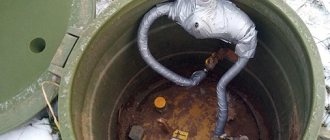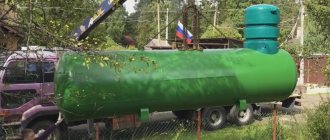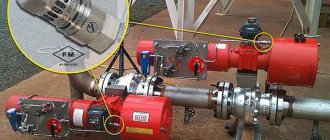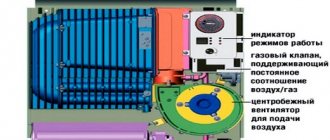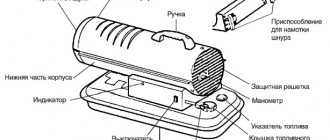Home / Tips
Back
Published: 10/23/2019
Reading time: 2 min
2
2358
Owners of country houses try to minimize gas consumption for heating the house, taking into account the overall comfort of living.
The reason for this is the increase in prices for natural fuel, which is why the owner’s family costs for paying utility bills increase.
The thermal energy created as a result of gas combustion in the boiler is additionally spent to compensate for heat loss. This is especially true in winter, when the ambient temperature can drop below -15 degrees.
- 1 Where is the gas used?
- 2 Dependence of gas consumption on internal and external factors
- 3 Useful tips for saving
How to save gas when heating a private home
Gas consumption when heating a room depends on various factors. First of all, it depends on the technical condition of the house. To save on heating, you need to replace wooden windows with plastic ones, make repairs, seal all the cracks, insulate the door, floor and roof. Of course, this requires financial costs, but over time it will all pay off, and you will spend much less money on heating your home.
Another important point is the layout and type of heating system installed. To heat a room, you can use various heating devices, but the basis should be water heating, which is heated with gas. If you decide to redo your heating, then first calculate its power. As a basis for calculations, take the ratio - 1 kW of energy per 10 sq. m of heated area of the house. The ratio should be taken only if the ceiling height is at least three meters.
The choice of heating boiler depends on the calculated power. The gas flow is also affected by the pipe layout. There are several schemes, each of which has its own advantages and disadvantages. However, the best scheme that allows you to minimize gas consumption is a collector scheme. How is it different from other options? Not all rooms in the house are used by the owners at the same time. At night, for example, you can reduce the temperature in the kitchen and living room, since they are not in use at this time. The collector heating circuit allows you to independently control the temperature in each individual room. This allows you to save gas consumption. In order not to control the temperature manually, install thermostats that will control the gas supply automatically.
And a few more important tips:
- When away, set the temperature to the lowest setting. If you will only be away for a few hours, you can turn off the boiler during this time. When you get home, turn on the heating immediately.
- If the boiler, expansion tank or gas boiler is located in a ventilated or unheated basement, be sure to insulate it. In addition to special insulating agents, you can also use foil. It perfectly reflects heat and helps create a “thermos” effect. Insulate the metal pipes that extend from the boiler and boiler.
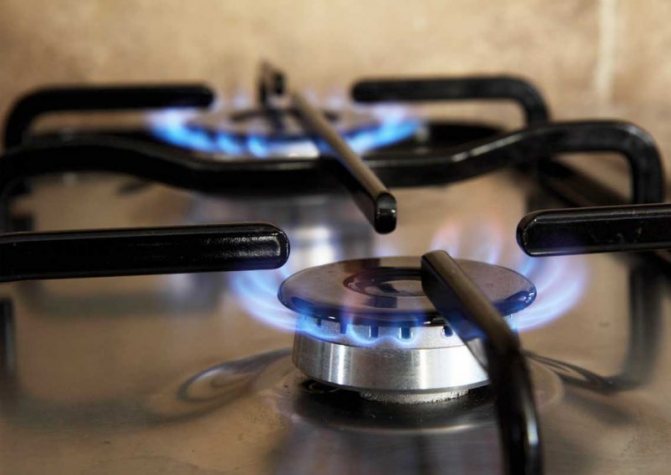
The magic gas saver is real
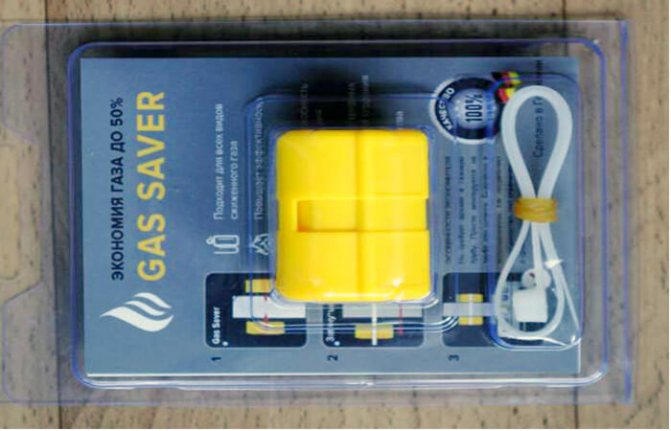
Has it finally happened? There is now a completely legal way to save on energy consumption using the Gas saver. That is, save your own money.
The vast majority of private households in our northern country are heated precisely through the combustion of this particular type of fuel - natural gas.
This magical device - a gas saver - is called in Russian interpretation “Gas Saver” (translated as a gas keeper - “saver”)
It is strange that widespread sales of the device have not yet captured either the Internet or television. After all, the savings would seem obvious.
For example, in Japan such devices have been used for a long time. The device is equally suitable for gas heating boilers, geysers, boilers, and stoves. It is also recommended to install it on the distribution system in car engines.
This magical device will reduce the overall heating costs of any private home, and will help owners of small businesses: restaurants, shops, stalls, and others where any gas equipment was previously installed.
The device is designed for all types of liquefied fuel. The efficiency of fuel combustion increases noticeably. The performance of any gas equipment improves, and gas consumption drops significantly.
How you can save gas using a thermostat
Modern gas boilers can be equipped with various types of thermostats. There are simple models, and there are complex ones, with various additional functions. The most sophisticated model today is a thermostat with sensors that monitor the temperature outside. The slightest changes in weather conditions are immediately transmitted to the boiler. You can purchase thermostats for each battery. Each room needs a different temperature, so they should be heated differently. This is exactly what the thermostat will do.
In practice, the fuel combustion process is carried out in devices (furnaces) that have very complex aeronomic characteristics. At the same time, not a single modern combustion device is perfect from an aerodynamic point of view, i.e. cannot ensure ideal (at the molecular level) mixing of fuel and oxidizer (air). At high temperatures and concentrations of the initial components, the mixture formation processes lag behind the speed of the chemical combustion reaction and thereby inhibit the combustion process.
An example of such a process is the combustion of previously unprepared hot water. In this case, mixing occurs directly in the combustion volume, and the time of formation of the combustible mixture significantly exceeds the time of the chemical reaction - the process of turbulent diffusion or diffusion combustion.
In the case of BASSPGV, the mixture formation time and heating time, on the contrary, are disproportionately less than the time required for the chemical reaction to occur, i.e. the reaction rate is described by the laws of chemical kinetics, and the combustion process itself occurs in the kinetic region.
In the case of operation without BASSPGV, worse organization of mixture formation is observed. In this case, part of the gas molecules, without contact with oxidizing molecules, undergo thermal decomposition in the high temperature zone with the formation of lighter compounds and carbon atoms. Pyrolysis of gases proceeds according to a complex transformation scheme.
The carbon atoms released as a result of pyrolysis have 4 free bonds that do not exist separately, and in areas of oxygen deficiency they connect with each other, forming solid graphite crystals - the smallest particles of soot. In the zone of active combustion, they heat up, forming a brightly glowing torch (yellow-red glow) - the process is slow, drawn out - the torch turns out to be long, stretched out. A certain amount of soot inevitably ends up in areas with a lack of oxygen and does not burn, which leads to heat loss with mechanical underburning. In addition, a greasy soot deposit forms on the heating surfaces, reducing the intensity of heat transfer.
In the case of BASSPGV, with good mixture formation, when all fuel molecules come into contact with the amount of oxidizer molecules necessary for complete combustion, a relatively small amount of hydrocarbon particles are formed, which, when entering a zone with a sufficient oxygen content, quickly burn. Therefore, the length of the torch is insignificant; at the same time, the specific heat release significantly increases, since the chemical reaction of oxidation of the flammable components of the gas at high temperatures occurs almost instantly. Shortening the length of the torch does not mean that it is approaching the mouth of the burner and, as a result, “burning out” of the burner.
Each burner, within the specified limits of change in productivity, must ensure reliable combustion of the torch without extinction, pulsation or separation from the burner.
The torch is considered stable if, under steady-state fuel supply conditions, it stabilizes near the burner mouth and does not change its average position in space, as is the case with BASSPGV. This state of the torch is selected in accordance with the speed of flame propagation and the counteracting speed of the hot water flow flowing from the mouth of the burner.
If the flow rate of hot water exceeds the speed of flame propagation, then the phenomenon of “drawing the flame into the burner,” the so-called “breakthrough” of the flame, is impossible.
Moreover, if the flow rate of hot water is excessively high, then the mixture does not have time to warm up sufficiently due to the recirculation of combustion products to the root of the torch and the torch “separation” occurs.
Stable combustion over a wide range of speeds is observed only with a small amount of primary air in the initial combustible mixture. In this case, the source of ignition is a diffusion flame that occurs during gas combustion due to secondary air with an increase in the proportion of primary air - the limits of sustainable combustion are reduced, because the influence of the diffusion ignition front is leveled out. At αg = 1, i.e. when there is no diffusion combustion at all, the combustion of the mixture is stable only in a very narrow range of changes in the velocity of the gas-air flow.
Therefore, such concerns can be understood, but not in terms of “breakthrough” (in our experiments, with all parameters of boiler operation, the flow rate of hot water always exceeded the speed of flame propagation), but in terms of “separation” of the torch (its extinction) - although in our experiments with all We have never seen this under load!
In order to 100% eliminate the possibility of “flame separation”, it is possible to perform a small reconstruction of the burners in order to increase the temperature level in the area of hot water ignition with swirling flows, ensuring the suction of hot combustion products to the root of the torch in the axial zone.
Installation of a high-quality ventilation system
A well-planned ventilation system also allows you to save gas correctly. The ventilation system removes not only exhaust air from the room, but also heat. If it is properly planned, then heat loss will be minimal.
To save gas, purchase a recuperator. It is a pipe within a pipe. The inner pipe removes heat from the house, and fresh air enters between the gaps of the two pipes. The warm internal air that is inside heats the air that flows between the gaps. This saves gas significantly.
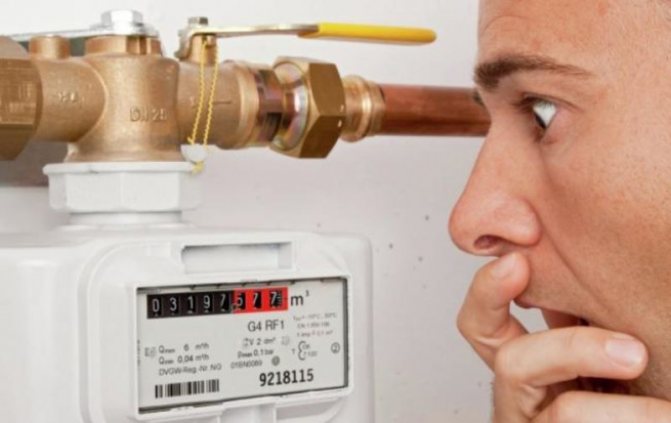
We save gas in the apartment
You can save gas in your apartment in different ways. Here are just a few of them.
- Installation of meters. This device will allow you to pay only for the amount of gas you use. However, you will first have to spend money on purchasing and installing a meter. These costs pay off quite quickly. You can find out about installation requirements and rules from your gas service. The meter must be installed by a specialist who has access to this type of work.
- Turn off gas-powered appliances if they are not working. Be sure to pay attention to the strength of the flame while cooking. The fire should heat the bottom of the dish and its walls. Once it begins to boil, reduce the heat to low. Don't heat a full kettle of water if you just want a cup of tea.
- When cooking, you can save gas in the following ways. Firstly, line the surface of the stove with foil, and secondly, purchase dishes designed for gas stoves.
- If you use a gas water heater to heat water, the following simple recommendations will help you. When brushing your teeth, turn off the water and take a shower rather than a bath. Install special water dividers on the shower and taps.
How to save gas in an apartment with a meter
- The most important rule for saving gas in an apartment is insulation. You need to insulate the windows (or better yet, install double-glazed windows), the walls on the outside and inside, and the front door. All this will reduce heat loss by 50%.
- Reduce the room temperature by 1-2 degrees. It’s not difficult to get used to such changes, but the savings will be significant.
- Ventilate the room properly. There is an opinion that to ventilate the room you need to constantly keep the window slightly open. This is not very economical, since a large amount of heat is lost. It is better to open all windows for 30-40 seconds. This time is enough to completely freshen the air in the apartment.
Saving gas in your apartment and house will allow you to reduce utility costs, the price of which increases every year. Pay great attention to insulating the room. And it doesn’t matter whether you live in a private house or apartment. If in an apartment you need to insulate the windows, walls and front door, then in a private house you also need to take care of insulating the floors and roof.
Don't neglect the simple saving tips listed in the article. In fact, they allow you to save a lot of gas and, accordingly, the family budget. If you don't have a gas meter, be sure to install one. All costs will be recouped in the first year.
How to save gas in the kitchen and bathroom
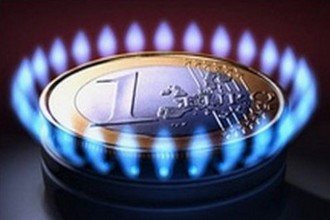
Apart from heating, the kitchen “eats” fuel the most - cooking, washing dishes, brewing tea - individually it seems like a trifle, but all together this is quite a significant gas expense. To avoid this, you should follow fairly simple rules:
- Turn on the stove only after all the necessary ingredients (vegetables, meat, spices) and dishes are prepared.
- Use large-diameter cookware and place it in the middle of the burner so that the flame does not extend beyond the edges. The hottest part of the flame is its tip; it should touch the pan, not spread underneath it.
- Cook food with the lid closed. This will save up to 15% gas and increase the humidity level in the room less. After the water boils, turn on the combustion intensity regulator, and immediately turn it off after cooking.
- Use the largest burner as little as possible.
- Close the oven door tightly and try not to open it during baking; if you keep the viewing window clean, everything will be visible through the glass. You should not use the oven to cook small amounts of food.
- Use a kettle with a whistle and a pressure cooker (this reduces the cooking time by 2 times).
- Wash dishes using chemicals in a closed sink and rinse under running water.
- Remove scale from the kettle in a timely manner using special preparations or solutions of acetic or hydrochloric acids. Limescale has a thermal conductivity 30 times less than metal, which steals gas and time.
- Turn off the heated towel rail in the bathroom when you don’t need to dry anything. Otherwise, the temperature in the bathroom will be elevated throughout the day, and this is most often not necessary.
- Change your habits and take a bath no more than once a week, and use the shower on other days. In this case, it would be a good idea to install an economical nozzle on the shower head.
- If the bathroom has forced exhaust ventilation, then it should only be turned on for a time sufficient to remove excess moisture from the room.
- Small hand washes (panties, socks, handkerchiefs) should be carried out not under running tap water, but in a bowl. In summer, these items can generally be washed in cold water; the cleaning properties of laundry soap are quite sufficient for this.
Putting these tips into practice will not cause significant inconvenience to the family, but will not only save the family budget, but also instill in children such positive qualities as a thrifty attitude towards natural resources, which are not unlimited.
Read more
- Regulator for saving water consumption
- Saving water at home




